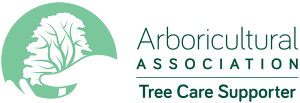When is the bird nesting season?
The ‘Bird Nesting Season’ is officially from February until August (Natural England) and it is recommended that vegetation works (tree or hedge cutting) or site clearance should be done outside of the nesting season. However, in reality the nesting period may start before this and extend beyond it, in some cases. The busiest time for nesting birds is from 1st March until 31st July and of course varies according to species, etc.
Responsibilities of Tree Work Contractors:
As contractors we must aim to avoid impact to nesting birds and infringement of the Wildlife and Countryside Act 1981 and breaching the European Habitats Directive 1992/Nesting Birds Directive.
When tree or vegetation clearance work has to be undertaken during the nesting season, a pre works survey needs to be carried out by a suitably competent person. As a general rule, it should be assumed that birds will be nesting in trees, and as contactors it is down to us to assess, record and confirm that any works carried out in the management of trees and other vegetation has not disturbed actively nesting birds.
Ground vegetation, and therefore ground nesting birds, can often be overlooked by tree workers so additional care and controls should be taken when access and egress to the work site may also cause disturbance or damage to a nesting site. This is also true for retained trees on site as the removal of adjacent trees or remedial works on a tree may lead to the established nest being abandoned, exposed to the elements or predation. This action is also a breach of the act and therefore could lead to prosecution.
In our experience most clients are sympathetic and if works need to be put on hold until nesting is over then this is usually accepted.
On larger scale developments the main client should be well aware of the requirements of the legislation and therefore should be more than sympathetic and support you as a contractor not to breach the legislation. If this is not the case you may need to review the suitability of the client!
Further information:
Natural England - Wild bird survey guidance
What should I do to make sure that Bats are not affected by tree work?
All British Bat species are protected by law and many bats roost in trees; although some bat species have adapted to living in buildings, trees still remain important throughout the year for most of the UK’s 16 species. Suitable trees are becoming fewer and further between as older and hollow trees, which provide holes to roost in and a feast of insect life (and even younger trees with suitable cavities) are removed.
Please remember to check with your arborist that they have checked the tree(s) for bats or roosts before work commences. If bats (or roosts) are thought to be present before, or during, work then works should be stopped and advice sort from Natural England or a competent ecologist to ensure you will be working within the law.
The presence of bats does not necessarily mean that tree work cannot proceed, but it does mean that the above procedures must be followed in order to ensure you are working within the law and minimise the risk of bats being killed or injured.
If you are interested in finding out more about one of the UK's rarest mammals please contact the Bat Conservation Trust.
What birds are protected?
There is often the misconception that some birds are exempt from protection i.e. feral pigeons, magpies, crows etc., but this is not the case:
All wild birds are protected under the Wildlife and Countryside Act 1981 (as amended) whilst they are actively nesting or roosting.
It is also an offence to take or destroy any wild bird eggs.
In addition, bird species listed under Schedule 1(3) of the Act receive extra protection.
